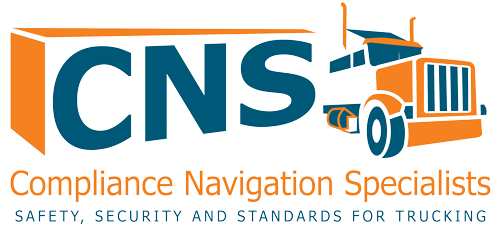Should a CDL Driver Be in Your Drug Testing Pool if They’re Listed as Prohibited in the FMCSA Clearinghouse?

Key Takeaways
- Prohibited = Not Eligible to Drive = Not in the DOT Pool
- Even if the driver has a CDL, they should not be tested under DOT rules until they are cleared through the RTD process.
- Keep safety-sensitive job roles and DOT drug testing compliance tightly aligned.
A common scenario faced by Designated Employer Representatives (DERs) and safety managers is determining whether a CDL-holding employee—who is Prohibited in the FMCSA Drug & Alcohol Clearinghouse but not currently driving—should be included in the DOT drug testing pool.
This situation often arises when a new hire has a prior violation but hasn’t completed the Return-to-Duty (RTD) process before coming onboard.
So what’s the right move?
Here’s a detailed breakdown to help you stay compliant, avoid unnecessary liability, and manage your testing pool correctly.
Understanding FMCSA Clearinghouse “Prohibited” Status
When a CDL driver is marked as “Prohibited” in the FMCSA Drug & Alcohol Clearinghouse, it means:
- The driver tested positive on a DOT drug or alcohol test, refused to test, or committed another violation.
- The driver has not yet completed the Return-to-Duty (RTD) process, which includes evaluation by a Substance Abuse Professional (SAP), completion of education or treatment, and a negative return-to-duty test.
While they remain prohibited, the driver cannot legally operate a CMV.
Related: Do I have to be Employed for the SAP Return-To-Duty Process and Follow-up Testing?
Does “Prohibited” Mean You Must Keep Them Out of Your Testing Pool?
Here’s the key:
If the driver is not currently performing any safety-sensitive functions, including operating a CMV, they should NOT be in your DOT random drug and alcohol testing pool.
The DOT testing pool must only include:
- Drivers actively performing safety-sensitive duties.
- Drivers ready and eligible to perform such duties, including being legally qualified.
A driver listed as “Prohibited” in the Clearinghouse is not legally allowed to perform those duties. Therefore, they do not meet the criteria to be in a DOT random testing pool.
What If the Driver Has a CDL but Isn’t Driving for You?
This is an important distinction:
- If a CDL holder is employed in a non-driving role, is not on your roster to drive, and is Prohibited—they should not be in your DOT random testing pool.
- If you plan to eventually assign them to a driving role, they must complete the RTD process first. Only then can they be included in the DOT pool.
Until that time, you can exclude them from random DOT testing without penalty, since they are not in a safety-sensitive function.
Best Practices for Managing “Prohibited” Drivers
- Run a Pre-Employment Query Before Hiring
- Always check the FMCSA Clearinghouse before putting a CDL driver behind the wheel.
- A full query is required before hiring a driver into a safety-sensitive role.
- If a Driver Is Prohibited:
- Do not allow them to drive or perform any safety-sensitive functions.
- Do not place them in your DOT drug/alcohol testing pool.
- Consider offering support or guidance to help them complete the RTD process, if you plan to use them as a driver in the future.
- Keep Records
- Maintain documentation of the Clearinghouse query results.
- Clearly note whether the employee is in a driving or non-driving position.
- Educate Your HR and Safety Team
- Make sure all decision-makers understand the Clearinghouse rules and testing pool criteria.
- This avoids accidental non-compliance and limits liability during audits.
Need Help Managing Your Testing Pool?
Whether you’re confused by the Clearinghouse rules or just want to make sure your random testing program is audit-proof, our compliance experts can help.
From Clearinghouse queries to Return-to-Duty monitoring, we help carriers stay on the road—and out of trouble.
Become a Consortium Member today or fill out the form to chat with our team.
Questions about DOT Compliance, Licensing, Audits, Programs, etc.?
Our DOT Specialists are here to help!
What are you searching for?
Is DOT Compliance your Top Priority?
Our DOT Compliance Programs ensure it is your top priority and keeps your business running.
Related Services
Subscribe to our Monthly Newsletter
Receive the latest transportation and trucking industry information about FMCSA and DOT Audits, Regulations, etc.
Related news
Trucking News
Get the latest trucking news on DOT Compliance, Licensing, Audits, and more!

Is California Enforcing AB5 Against Trucking Companies?
What Fleets Need to Know After the First Major Enforcement Case Summary: For years, California’s independent contractor law — AB5 — has loomed over the

A Complete Guide to CDL Endorsements and Restrictions for Non-Trucking Companies
Hiring in 2026? Make sure you’re hiring qualified drivers who have all the right licensure and endorsements to operate your company’s vehicles. If your company

Legal Work Status and DQ Files: How to Verify a Driver’s Legal Right to Work in the U.S.
Driver shortages are leading more carriers to consider immigrant CDL applicants—but not all are vetted equally. Learn how to verify work eligibility and document it
